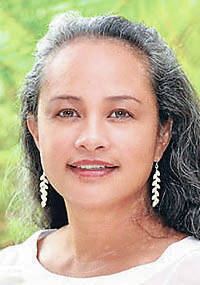New Hawaii County rules that would double the size of the island’s shoreline setback are closer to becoming reality.
A joint meeting of the Windward and Leeward Planning commissions on June 2 concluded their discussion of several proposed revisions to the county’s planning rules, which would, among other things, require that all new developments be located at least 40 feet inland from a shoreline, twice as far as is currently permitted.
Maija Jackson, program manager for the Planning Department, said the increase to the setback puts the county rules in conformity with Act 16, a 2020 state law that expanded the state’s coastal zone management laws.
“So, now the new minimum is 40 feet,” Jackson said. “The planning director has the authority to set a greater setback on a project-by-project basis. That evaluation is done based on the property, based on what information we have on erosion rates for that particular property.”
The commissions previously discussed the revisions in April, but postponed decision-making in order to allow for further changes to be drafted. Those additional changes largely did not involve the shoreline setbacks directly, but still generated lengthy debate.
In particular, commissioners were divided over whether to require certain structures to go through a public Planning Commission hearing to obtain a shoreline setback variance.
The current rules allow shoreline stabilization measures, for example, to obtain a variance without a hearing, while the rules presented in April would have allowed “other structures or activities” to obtain a variance as long as no person or agency requested a public hearing within 25 days.
That exemption was a sticking point for the commissions in April, and was removed in the latest version of the amendments presented June 2.
Leeward Planning Commissioner Mahina Paishon-Duarte was the lone commissioner to vote against the amendments during an initial vote on June 2 because of the changes to the public hearing rule. And because the amendments require unanimous approval to pass, the initial vote to failed.
Paishon-Duarte’s reasons for opposing the changes were unclear, because she was unwilling to discuss her motivations during the hearing.
“I understand the reasoning behind the proposed amendment,” Paishon-Duarte said. “I am not sure I have a proposed solution or amendment to offer at this time, but I am not comfortable leaving public testimony.”
But Paishon-Duarte did question Planning Director Zendo Kern, asking how removing the opportunity for the public to weigh in on a process is to the community’s benefit.
Kern said the waivers of public hearings are primarily implemented in emergency situations, offering hypothetical situations such as an imminently collapsing cliff face or an approaching hurricane.
Ultimately, however, the commissioners voted to remove that amendment from the package, tabling it for a later hearing, while advancing the other amendments to the County Council.
Those other amendments included streamlining how property owners and the county confirm whether a given site contains historic resources, and also removing a single instance of the word “sand” from the planning rules to avoid redundancy.
Dates for future hearings about the amendments have not yet been set.
Email Michael Brestovansky at mbrestovansky@hawaiitribune-herald.com.









